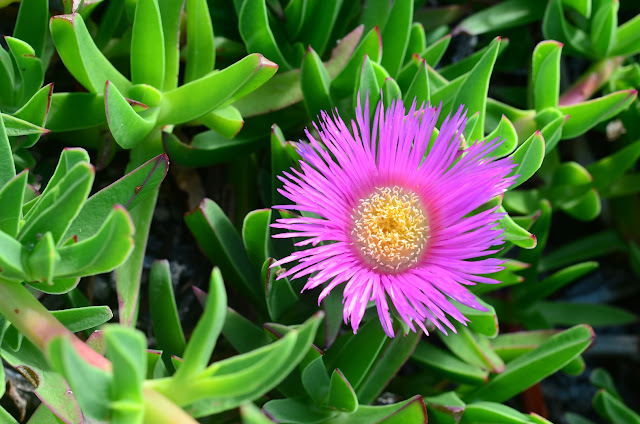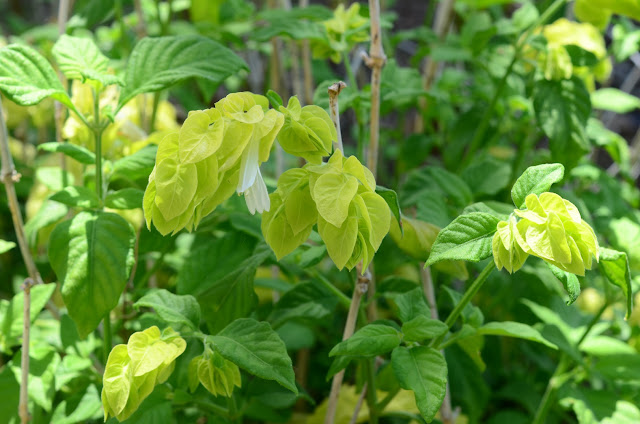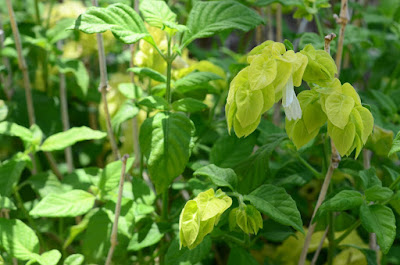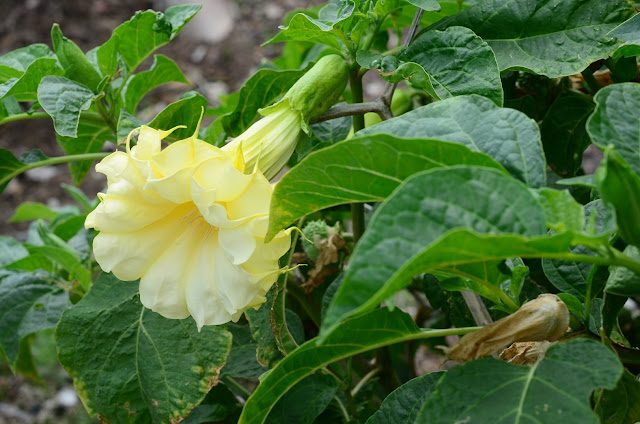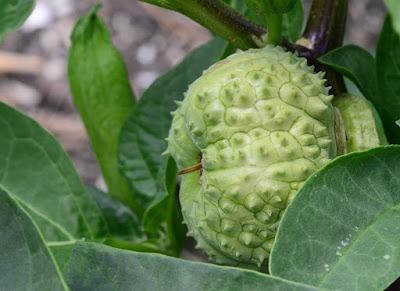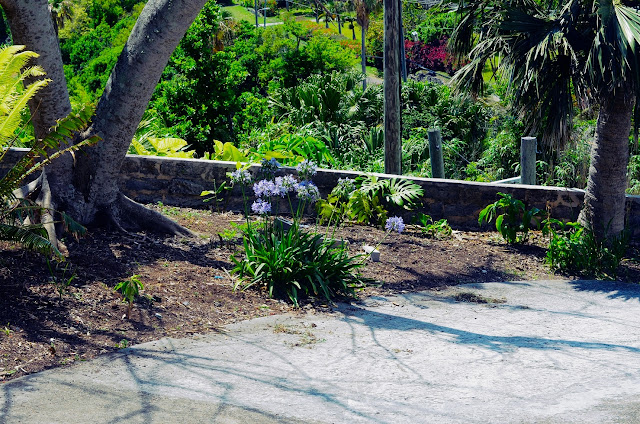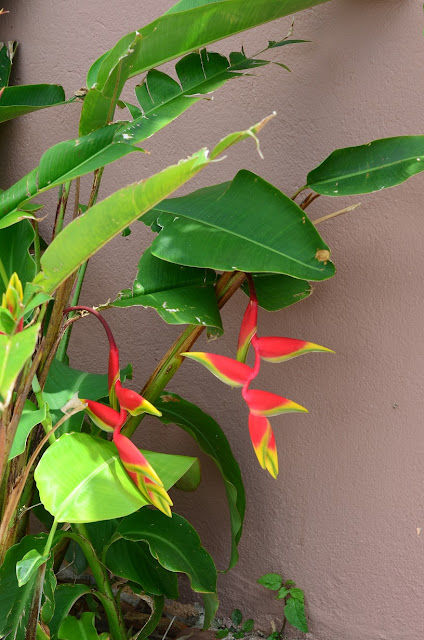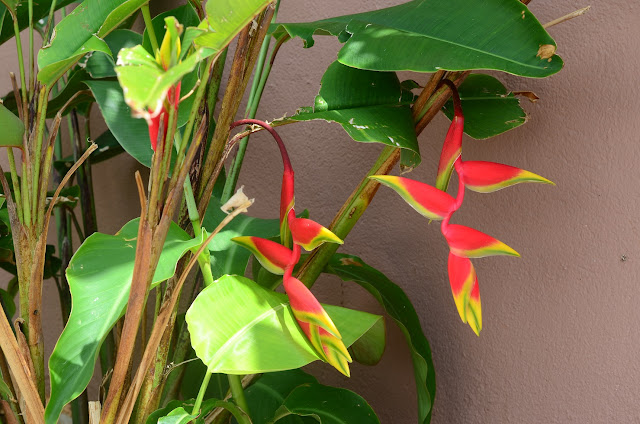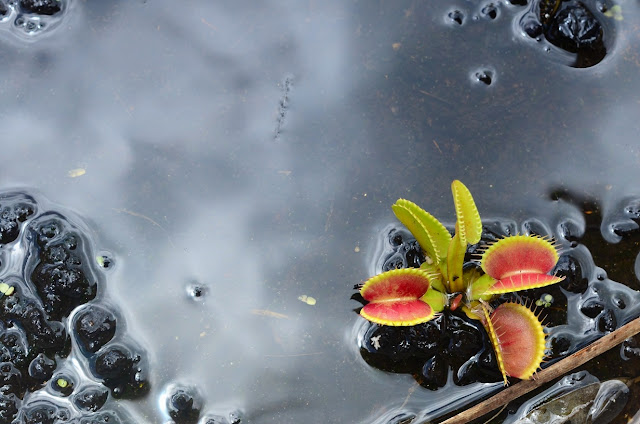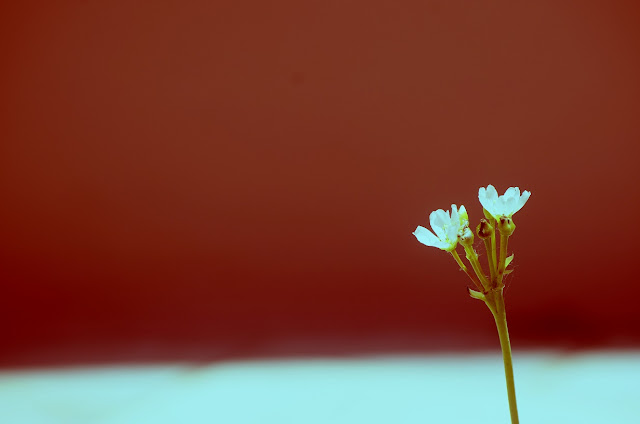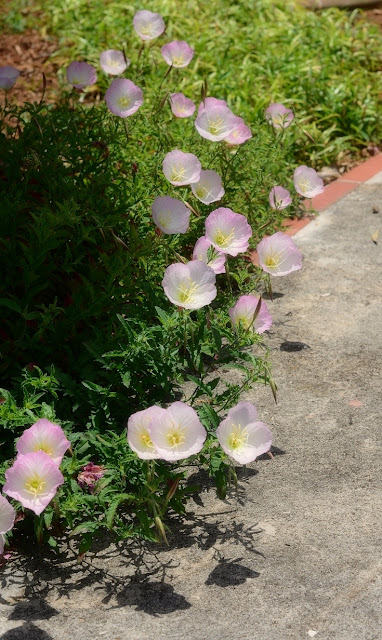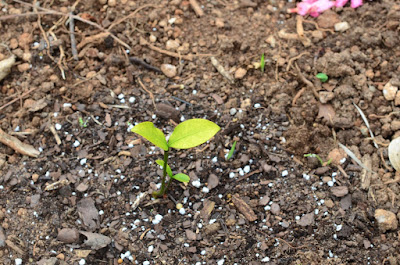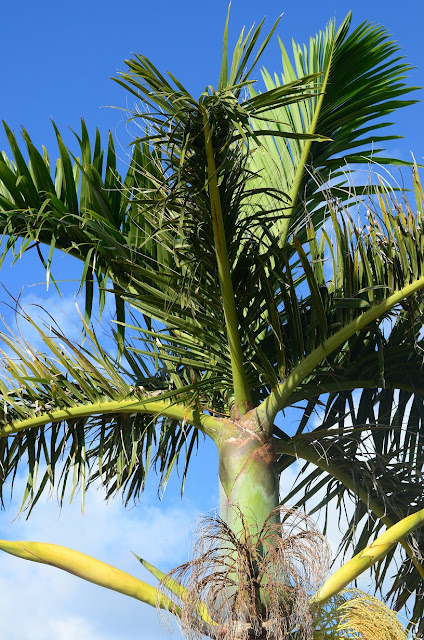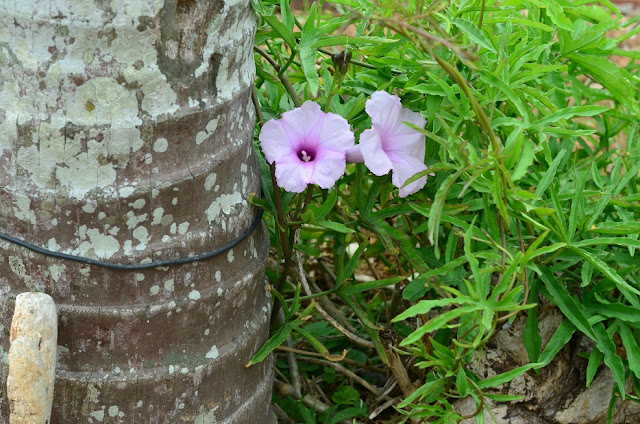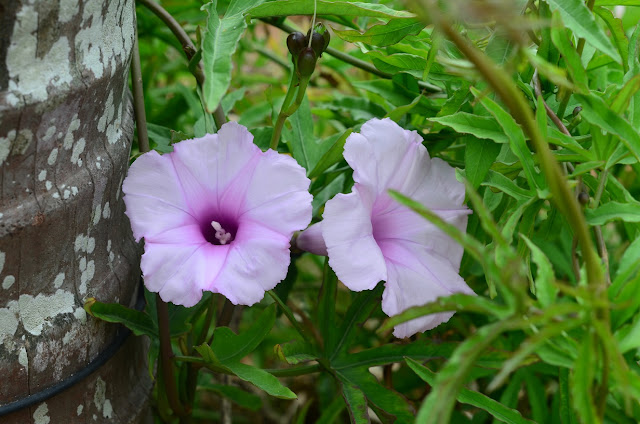Friday, June 26, 2020
Ice Plant
This plant (Ice Plant, Hottentot Fig, Sour Fig) is a food plant in its native Africa. The fruit and leaves are eaten. Don't look for it in your local supermarket (unless you live on the dark continent).
Tuesday, June 23, 2020
The Walls of Jericho
Saturday, June 20, 2020
Fruit, out to kill you.
 |
| Musa paradisiaca is the most common banana in Bermuda gardens. |
 |
| Passiflora edulis |
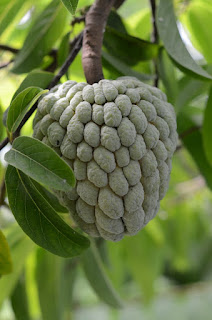 |
| Annona Squamosa also called Sugar Apple |
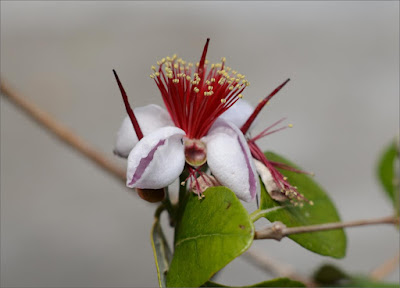 |
| Acca sellowiana. My Feijoa tree was murdered bt Humberto in 2019. |
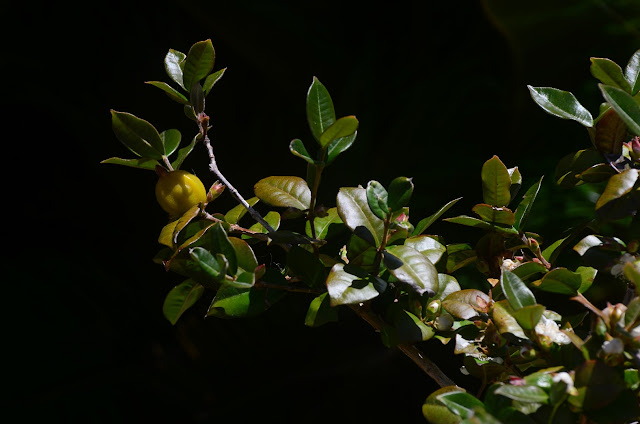 |
| Eugenia selloi |
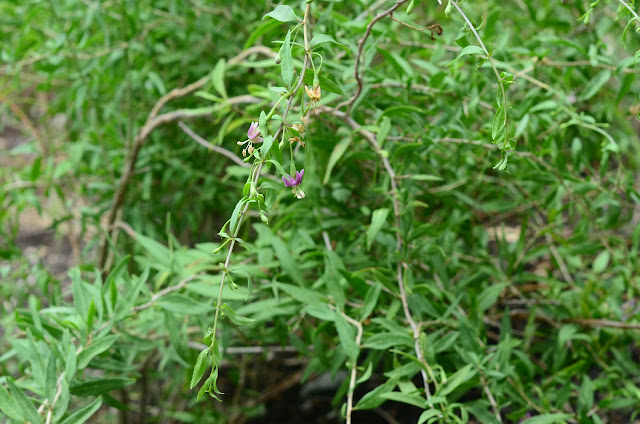 |
| Goji |
Tuesday, June 16, 2020
Agapanthus
Sunday, June 14, 2020
Heliconia
 |
| Gardening safely in a pandemic: the birdcage protocol. |
The month of June brings the strangest sights to the garden. Heliconias, for example. Now these imposing plants are related to the edible banana. Heliconias are, however, not to be eaten; rather, one must enjoy the eye-catchingly colorful bracts and bold demeanor they flaunt. But there is, as usual, confusion about numbing nomenclature; you see, botanists are a fickle bunch (bad pun says my ever-vigilant editor, sipping on a banana daquiri spiked with hydroxychloroquine). Yesterday they swore Heliconias were related to the banana (Musa species). Today they insist upon placing it in the Zingiberales family (i.e. ginger) and I am only slightly embarrassed to bring such dissension to your attention. The modern covid predicament: not only must one garden with masks and gloves, one must deal with quacks and the raves of family-swapping thugs. I protest.
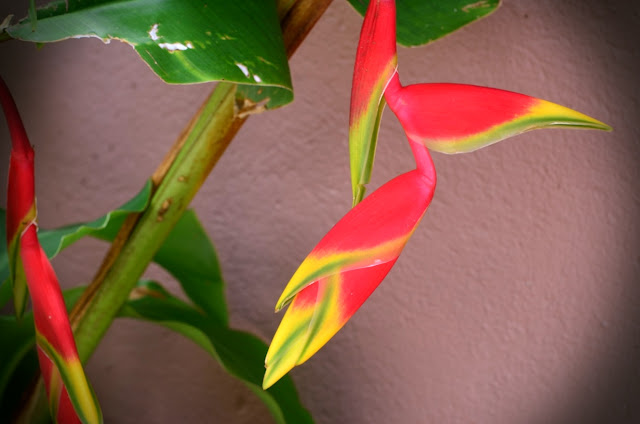 |
| Heliconia rostrata |
Saturday, June 13, 2020
Rain Lily
Day 13
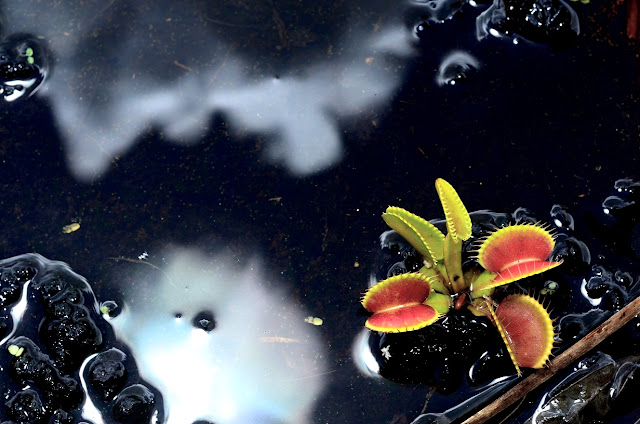 |
| Dionaea muscipula |
Here are more snaps from my recent trip to Venus. To my surprise the Venusian government was pretty lax about covid. Naturally, the administrators of our sister planet are etymologically concerned with the pervasiveness of venereal disease their planet, bathe in sisterly sulfuric clouds, but they tell me covid-19 is not a thing there, so tourists may peregrinate joyously without need of PPE, or, as I have heard about other jurisdictions, a tracking device which could easily record the intrepid traveler's oh-so innocent meanderings from one palatial house of ill repute to another, as Venus does have her charms.
Sunday, June 7, 2020
Day 7
Saturday, June 6, 2020
Day 6
 |
| Gardening in a pandemic |
 |
| Oenothera speciosa |
https://theimprobablegarden.blogspot.com/2020/06/first-cactus-blossom.html
Thursday, June 4, 2020
Day 4: Gardening in a Pandemic
 |
| GARDENING IN A PANDEMIC |
Welcome back, friends. (I write as though there is actually an audience out there. This type of delusion is common in an epidemic--so they say.)
Here is the circular garden design, as promised:
At the base of the palm we find the Argentinian Morning Glory (Ipomoea platensis ) comfortably ensconced. Notice the large caudex. (My editor suggests I define such words as 'caudex,' but I am too lazy to act upon such valuable advice.)
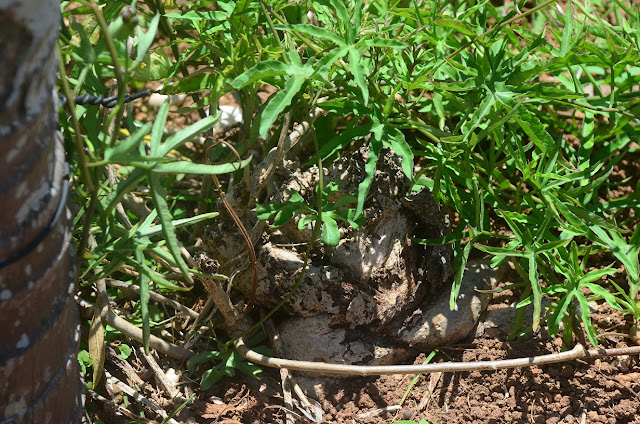 |
| Ipomoea platensis |
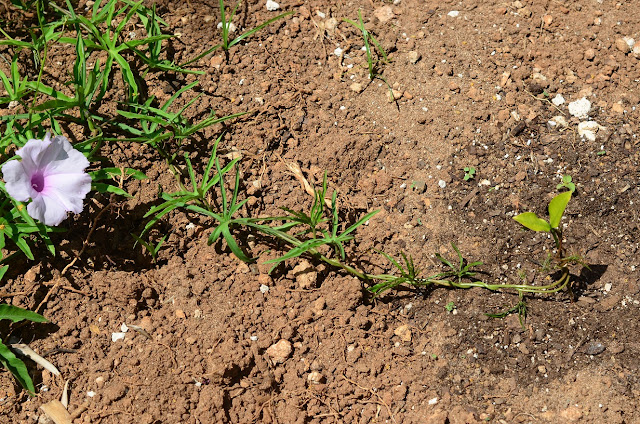 |
| A slight problem! |
 |
| Morning glory tries to strangulate Lemon-Drop Mangosteen. Bad. Unexpected problems often plague the keen gardener. |
Monday, June 1, 2020
The first post and a tentative garden project
So what if the improbable path is a tad overgrown? After all, you can still make out the stepping stones, but not over there, as some pernicious weed is overstepping its wafer-thin authority. Always seems to happen. Still, the offender in question has the stealth of an assassin and this leads me to conclude, after years of careful study, that members of the plant kingdom are untrustworthy, as opposed to, shall we say, your average blog narrator.
Parenthetically, I am informed by my editor, who is partial to all things lavender, that 'straighttalkedness' is not a word in any true sense; and for such shortsightedness I dismissed her summarily and asked her to kindly take all her aromatherapy paraphernalia with her—splitting an infinitive in the process, a little something designed to raise the hackles of my now jobless greenhorn editor.
And while giving consideration to the kingdom Plantae, I would be wholely remiss if I were not to touch upon the perennial concept of beauty (and of horrid puns). Plants, those photosynthesizing conjurers, often avails themselves of tawdry lures such as sporting a coat of pubescent fuzz, the mere touch of which excites, or having the audacity to exude heady perfumes, or wantonly displaying colors which shock the soul.
And so, Eve shockingly tempted Adam with a brick red apple. Apple seeds contain cyanide. Do you see where I am going with this? Did Eve really want to knock off her first beau or is this the story of how plants are trying to kill us? An interesting narrative challenge, to be sure. My belief is that plants are indeed trying to murder us, in our sleep or as we wake, and that we are hardwired to respond to narratives. More about these intriguing though disparate concepts later, perhaps.
Nevertheless, the plan for the first pandemic garden is that of a simple circle. Yet can circles be anything but simple? This is a rhetorical question and you, my dear reader, ought not rush headlong into proffering an answer—unless you squarely want to. Circle and square, ying and yang: this sort of musing is beyond the purview of this blog, as is ultimately the meaning of mathematics or the reasons why you’re always tongue-tied when it comes to justifying your monthly expenses.
Then there’s this obsession you, dear blogofile readers slash viewers, have with pictures. Not to disappoint I will occasionally include visual aids, even though words ought probably be enough. And what was it Susan Sontag said about photography? It’s all murky to me now and my temperature is rising. But we are in the 21st century, in the middle of a pandemic, and we need to step back and do something bold and invigorating, such as planting a garden.
So here’s a nifty info-graphic of my pandemic-induced brainchild:
This week I shall purchase a camera with the money I'm saving on bus fare; subsequently, you shall be able to regale in the type of verisimilitude (a literary term—how strange that should crop up here, along with another terribly bad pun) that only the labour of photographic equipment can bring to the blogosphere. When words fail, a picture never disappoints, unless it’s of the wrong thing, or that the focus isn’t spot on, or that the lens cap you should have removed irretrievably darkens your picture.
Till the next time, when I shall reveal the names of the newly planted trees. They are South American in origin, and so is the palm smack-dab in the middle, curiously enough. And at the base of the palm (not part of the pandemic plan) is an Argentinian Morning Glory. So, we have a near-perfect design and thematic unity—and this is only day one! What more could you ask for? You are perusing a free blog after all.
The unlabeled tufts of growth are probably weeds.
Featured Post
Rain Lily
Last week, in early June, in the midst of a pandemic, it rained hospitably. The 'rain lilies' responded. My editor, always keen to f...

-
GARDENING IN A PANDEMIC Welcome back, friends. (I write as though there is actually an audience out there. This type of delusion is co...
-
This is the tropical version of the daylily. It is called Lily-of-the-Nile by close friends and associates. Incidentally, we are in mid Jun...

